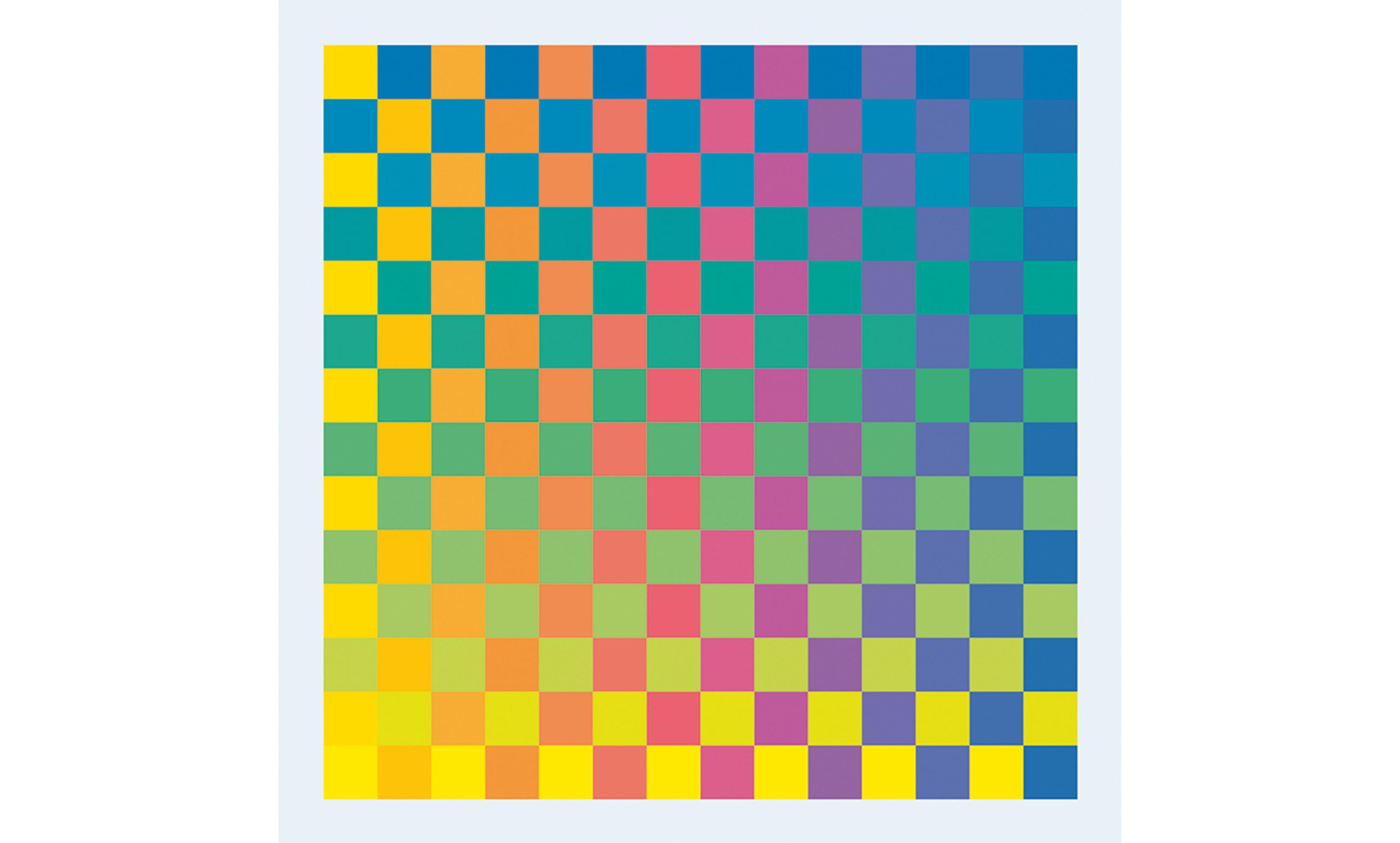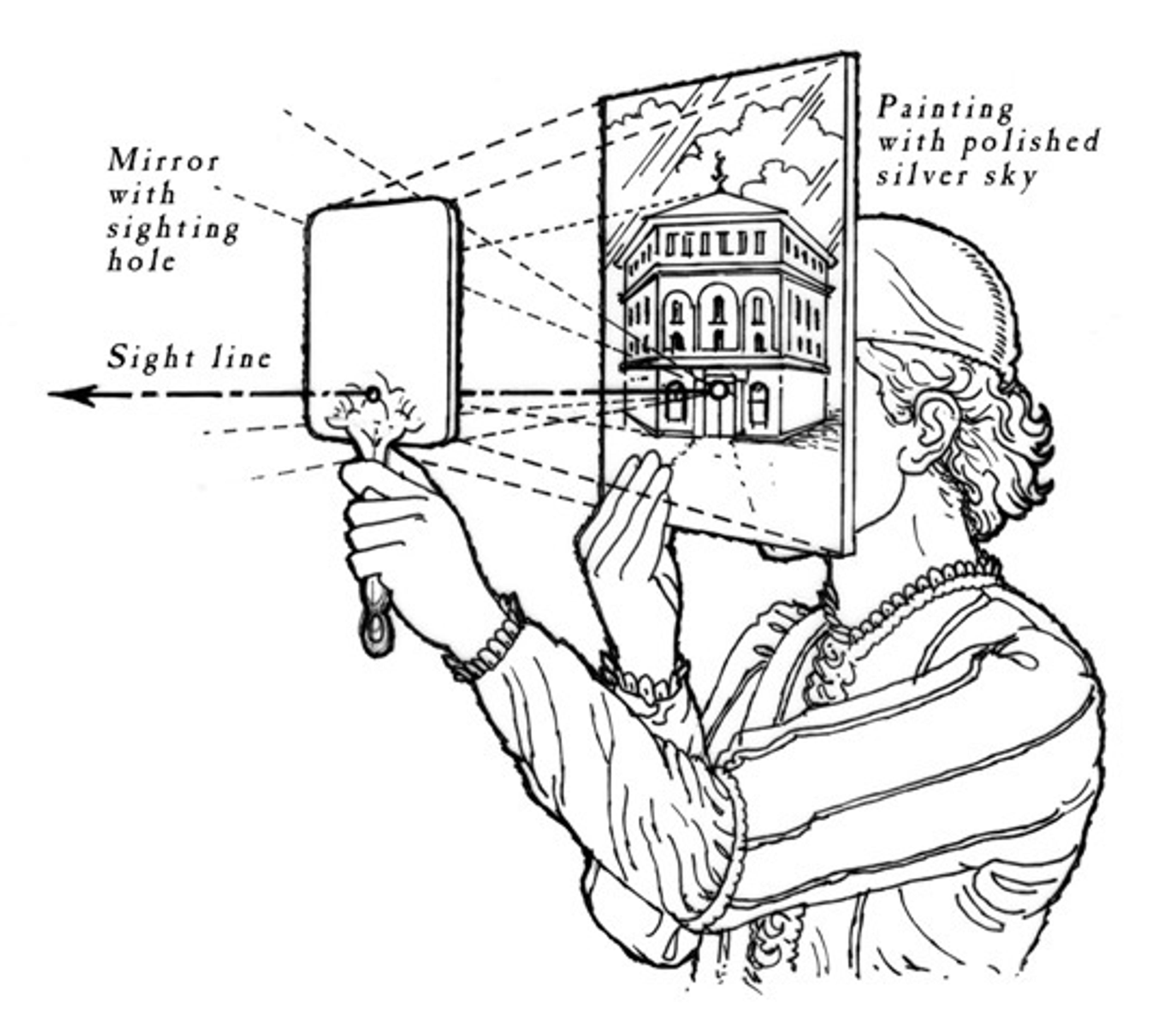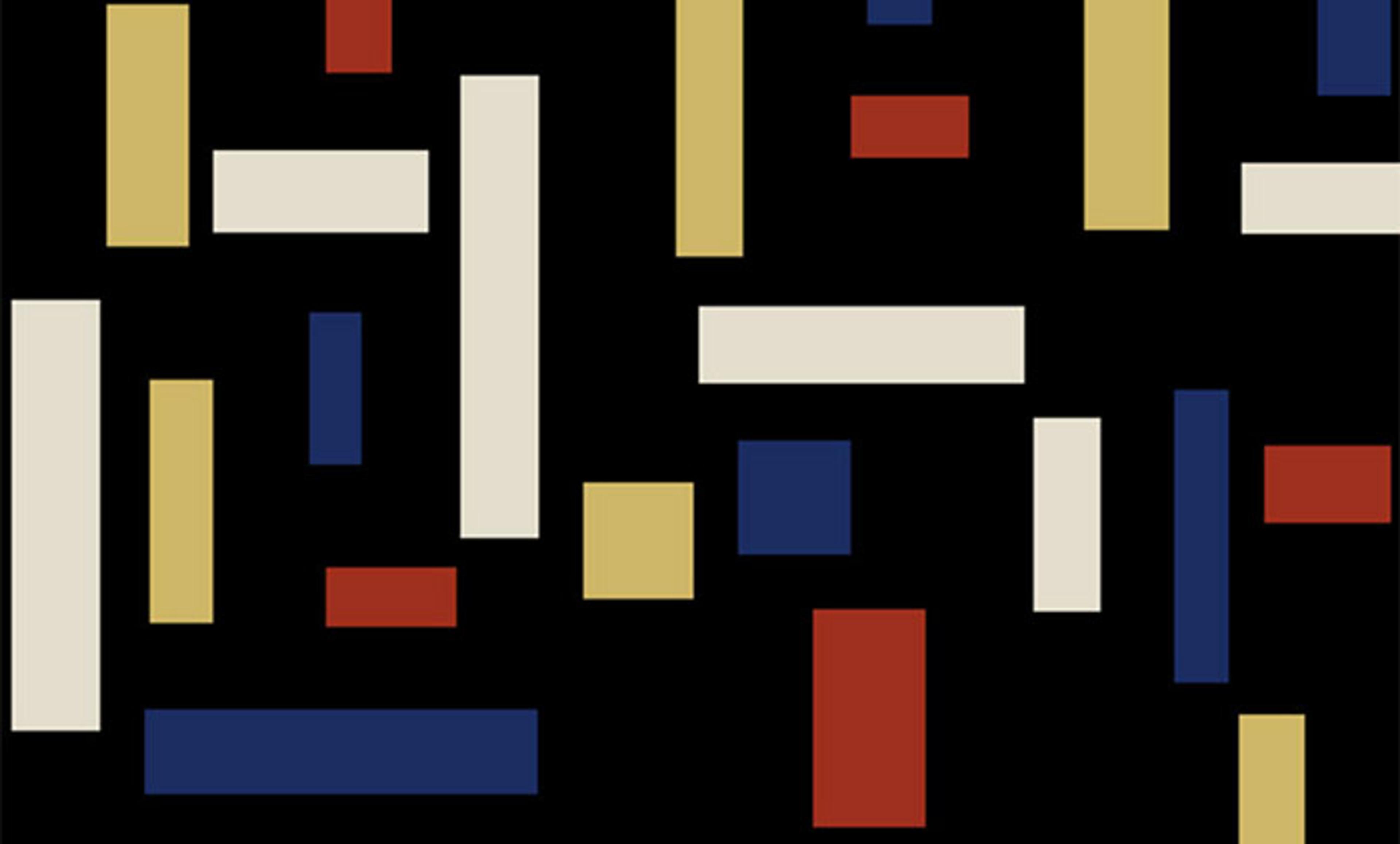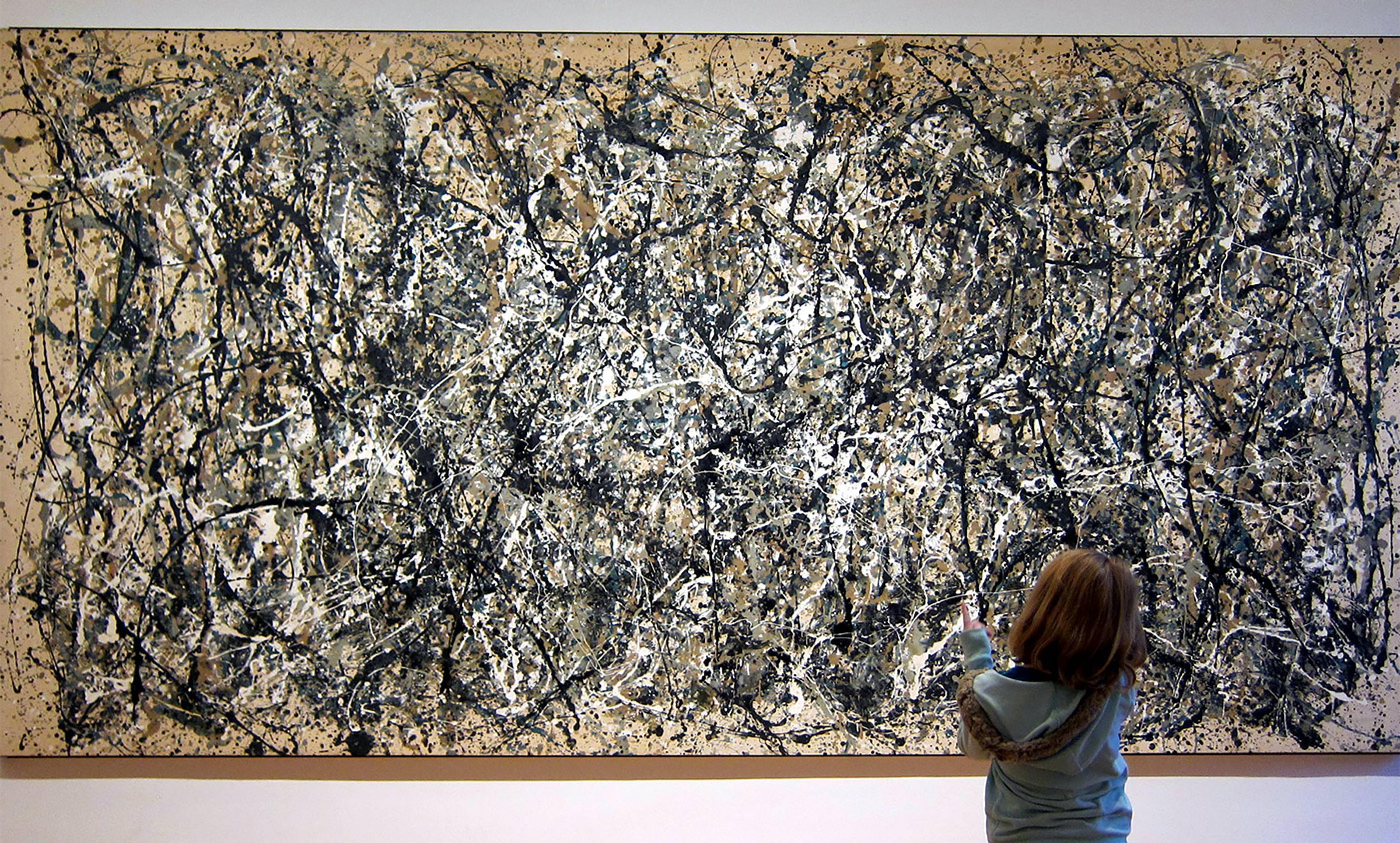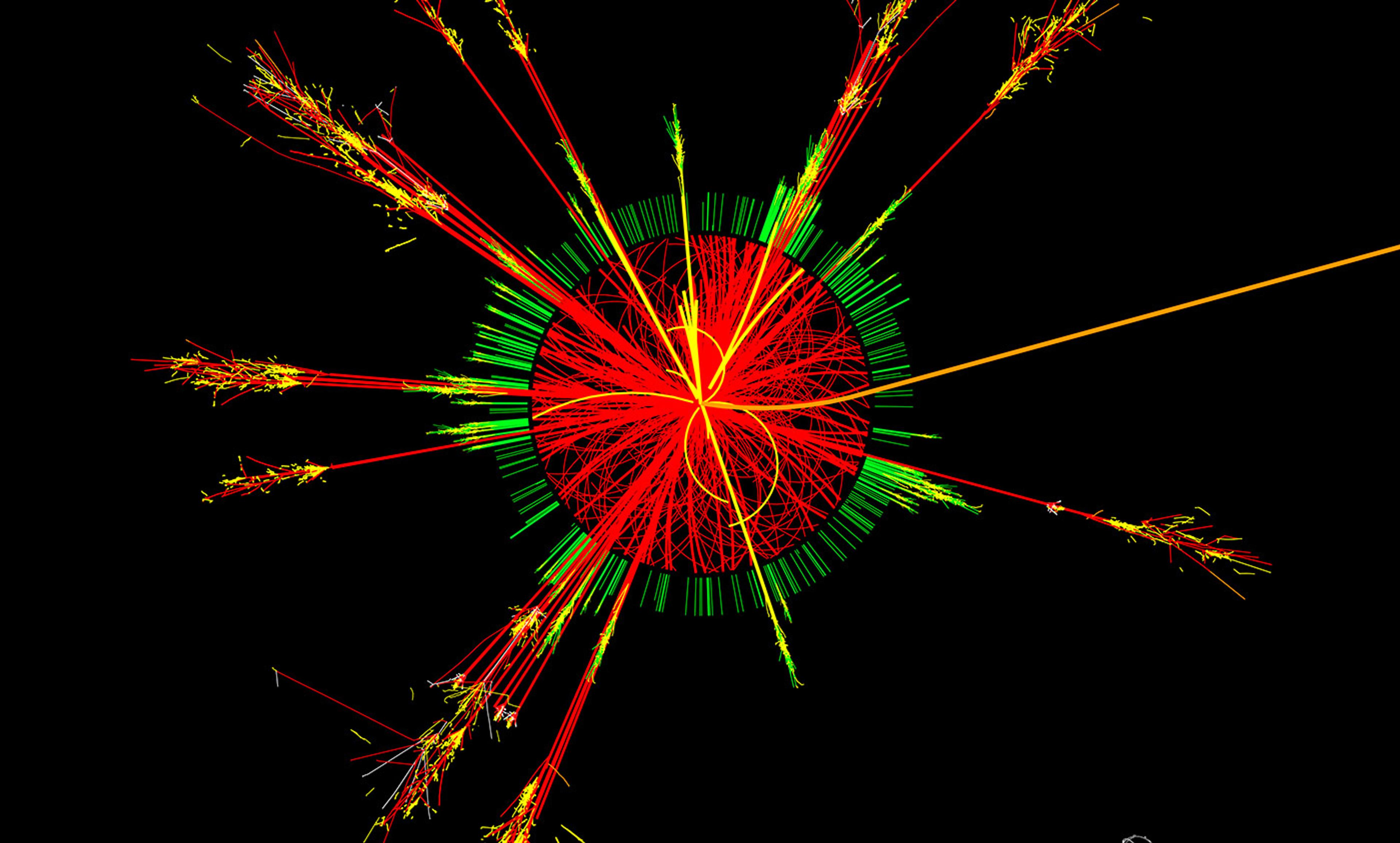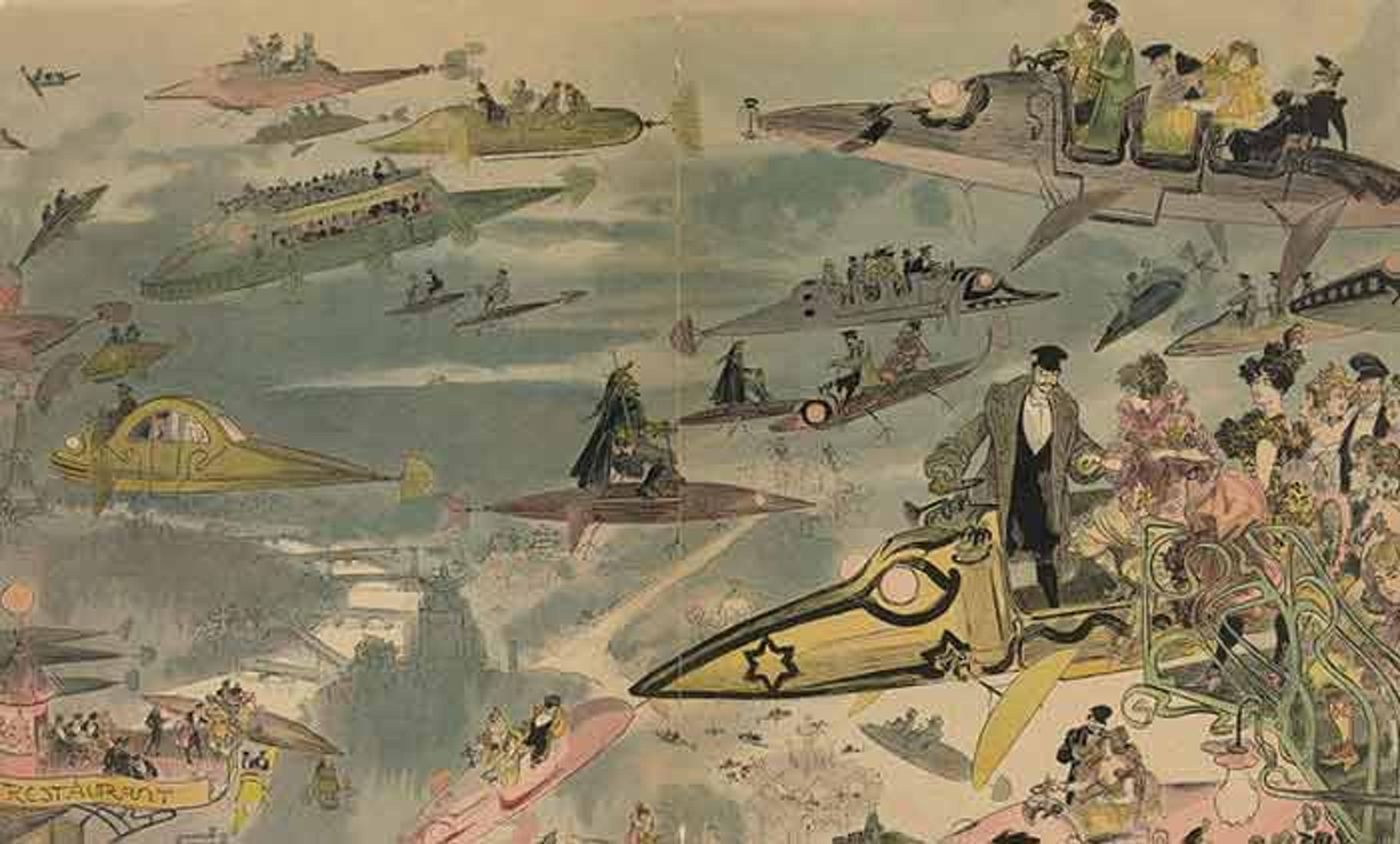Karl Gerstner, Polychrome of Pure Colors, 1956–58. Printer’s ink on cubes of Plexiglas, 1.1/4 × 1 1/4 in. (3 × 3 cm). ea., fixed in a chrome-plated metal frame, 18 7/8 × 18 7/8 in. (48 × 48 cm) ea. Courtesy of the artist.
One of the most profound insights of modern science is that nature has a symmetrical structure. Since antiquity, naturalists have observed bilateral symmetry in plants and animals, as well as symmetrical hexagons in ice and snow. In the 19th century, scientists looked through microscopes and saw that nature’s building blocks (cells, crystals) are arranged in symmetrical patterns and come in left-right pairs. In 1905, Albert Einstein discovered the symmetry of mass and energy – mass can be converted into energy and vice versa (E = mc2). He soon developed the general theory of relativity to give an accurate description of the cosmos from any frame of reference.

Karl Gerstner, Color Spiral Icon x65b, 2008. Acrylic on aluminum, diameter 41 in. (104 cm). Collection of Esther Grether, Basel, Switzerland
Scientists further confirmed that the laws of nature, such as the force of gravity and the speed of light, are symmetrical in the sense that they apply equally throughout the Universe. These discoveries found widespread application, even inspiring some artists to create iconic expressions of nature’s symmetry in their art. They’d learned of Einstein’s cosmology from popularisations such as Einstein’s own Relativity: The Special and General Theory, A Popular Exposition (1917). Karl Gerstner, a young artist in the 1950s and a leader of this new movement, expressed the impossibility of a single human point of view in the artwork Aperspective: 12 black and white units fixed to magnets, which can be repositioned endlessly within a fixed framework – like light moving through Einstein’s cosmos as a bounded infinity.
Gerstner’s work is in the tradition of Swiss Concrete Art, which was founded in Zurich in the 1930s and ’40s by Max Bill, Camille Graeser, Richard Paul Lohse and Verena Loewensberg. Zurich was a place where physicists and mathematicians, including Einstein, Andreas Speiser and Hermann Weyl, gathered to give a unified description of the forces of nature: gravity, electromagnetism, the strong nuclear force and the weak nuclear force. They used the mathematics of group theory to describe symmetry, which is the property of remaining unchanged when certain operations are carried out. For example, imagine drawing a line down the centre of a person from head to toe, dividing the body into left and right sides. If the person does a half turn (180 degrees) and then a full turn (360 degrees), the body’s silhouette does not change in these two positions because it has left-right (or ‘mirror’) symmetry. In the language of group theory, the body has twofold rotational symmetry about one axis.
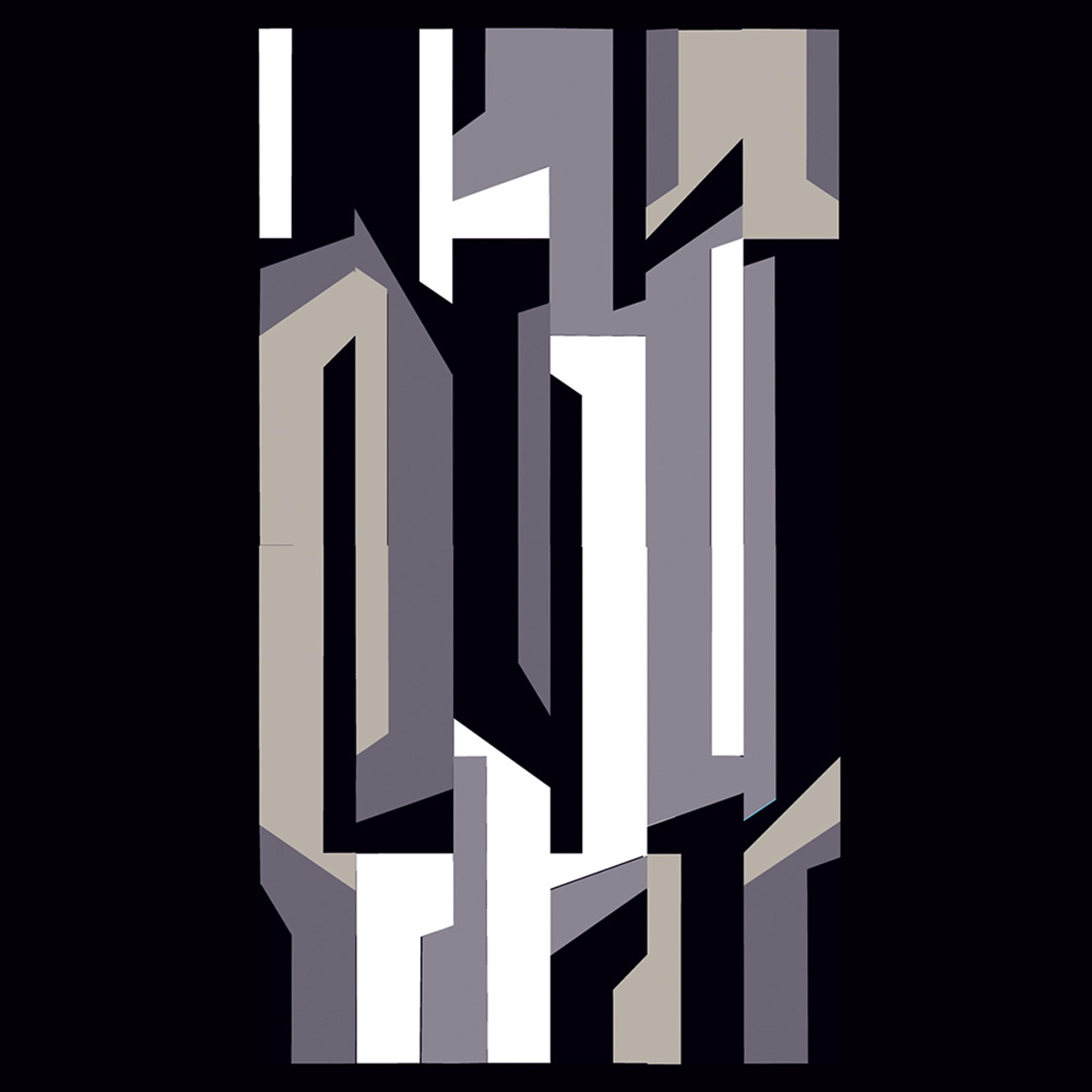
Karl Gerstner, Aperspective 1: The Endless Spiral of a Right Angle, 1952–56. Synthetic resin paints on 12 Plexiglas panels, 3 1/2 × 17 3/4 in. (9 × 45 cm) ea., secured with magnets unto iron over a base of black Plexiglas, 39 3/8 × 39 3/8 in. (100 × 100 cm). Courtesy of the artist
Inspired by Speiser and Weyl’s popularisations of group theory, Swiss Concrete artists created works with striking symmetry by establishing basic aesthetic building blocks – units of form and colour – and arranging them using rules that preserve proportion and balance. For example, the building blocks of Gerstner’s Blue Excentrum are circles, lines, blue, black, and white, to which he applied rules: double the dimension of each inlaid circle and colour it from light to dark blue; draw a vertical line at the perimeter of each circle and colour each ‘slice’ from white to black.
Early 20th-century German psychologists found evidence that the human eye, ear and brain have innate mechanisms for perceiving a pattern, called a Gestalt (German for ‘shape’ or ‘form’), as well as an ability to distinguish symmetrical patterns. Using these concepts, the Swiss art historian Heinrich Wölfflin explained how viewers perceive art, incorporating ideas from group theory to describe how artistic styles change over time. Wölfflin identified five transformations – for example, from linear to painterly – to describe stylistic changes from the Renaissance to the Baroque. At the University of Zurich where Wölfflin taught, his colleague Speiser from the physics faculty regularly attended his lectures. Speiser would have enjoyed seeing a visualisation of a transformation under invariance, where the same subject (such as a portrait), painted in a linear style during the Renaissance, is transformed by an artist using a painterly style in the Baroque.
In 1956, Gerstner met Speiser, then 71-years-old, who enthusiastically responded to the artist’s paintings because they resonated with group theory. Gerstner referred to his artworks using the mathematician’s terms (groups, permutations, algorithms and invariance), and the artist devised a modular system – a movable palette with 196 hues on a 14 x 14 grid – for experimenting with progressions that link form with colour in myriad arrangements.
Gerstner continued producing such patterns for many decades, such as Color Sound: composed of 12 overlaid coloured planes with symmetrical (T-shaped) holes. In this work, uniform ‘steps’ in hue and value are achieved by going from dark purple to mid-tone blue to white. Having learned from Gestalt psychologists that the perception of symmetry is innate, Speiser applied modern group theory to the ancient decorative arts of Egypt and the Near East, and demonstrated that this art has real mathematical content. Inspired by Speiser’s application of group theory to Islamic art, Gerstner created Color Lines by tracing one line through a pattern of Islamic tiles.
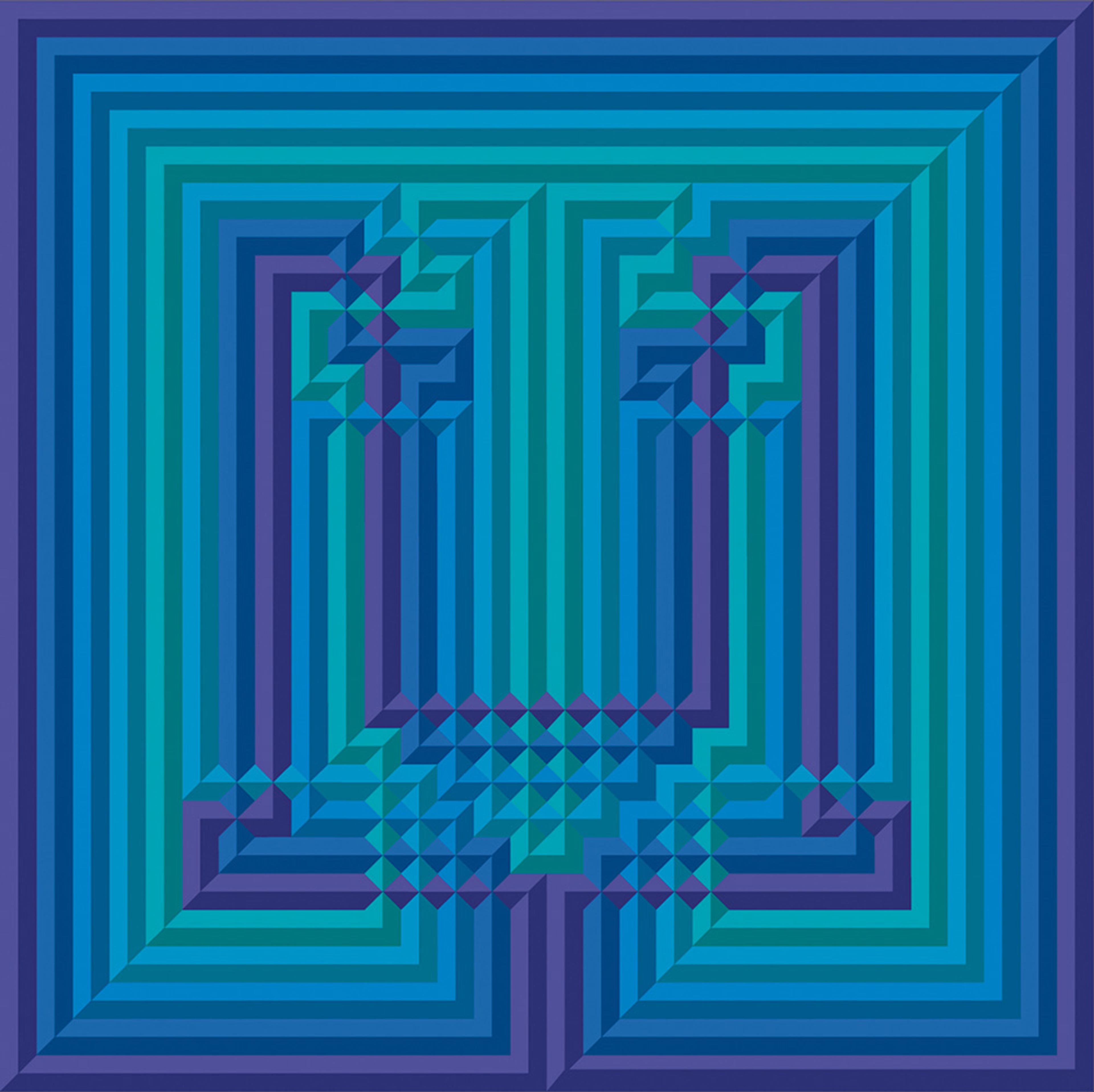
Karl Gerstner, Color Lines c-15/1-02, 2000. Acrylic paint on Cibatool profile bars (in low relief) in frames varnished black, 41 × 41 in. (104 × 104 cm). Courtesy of the artist
The most symmetrical form is a sphere, where all points are equidistant from a point in three-dimensional space. A sphere has an infinite number of axes through its central point, and it remains invariant when rotated to any degree, on any axis. In the late 20th century, scientists concluded that the Universe began in perfect symmetry as a point that exploded into a sphere of plasma. As the infant Universe expanded, the primordial sphere cooled, and matter condensed from the plasma to form the first particles, then atoms, gas clouds and stars. At some point, the original symmetry of the Universe was broken; the resulting asymmetries appear to be the result of random shifts analogous to mutations during evolution. Today at CERN (the European Organization for Nuclear Research) on the French-Swiss border near Geneva, physicists are recreating samples of this primordial spherical plasma to determine the degree to which the Universe retains traces of its original symmetry. Nearby in Basel, a 78-year-old Gerstner created a series of Color Icons (2008) to symbolise the symmetry of nature in the tradition of Swiss Concrete Art.
Mathematics and Art: A Cultural History (2015) by Lynn Gamwell is published via Princeton University Press.
